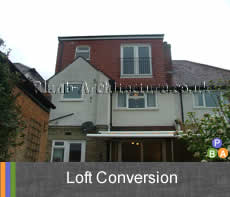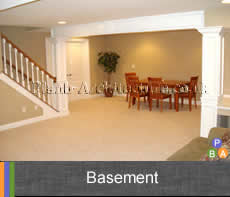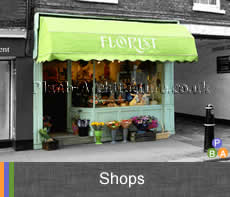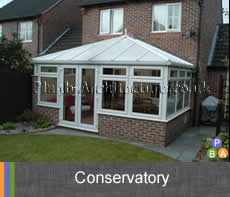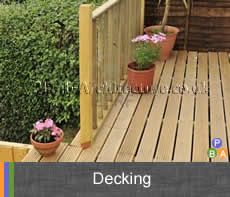PLANNING INFORMATION FOR PLANNING DRAWING AND APPLICATION SUBMISSION
What is planning?
Planning or planning control is the process of managing the development of land and buildings for any specific area. The purposes of this process is to safeguard the best of our heritage and improve the infrastructure upon which we depend for a civilised existence.
The local planning authority is responsible for deciding whether a development – anything from an extension on a house to a new block of flats – should go ahead. Your local planning authority (LPA) – usually the district or borough council – is responsible for deciding whether a proposed development should be allowed to go ahead.
Each local planning authority has their guidelines for the local development outlining how planning will be managed for that area even if it relates to small houses and householders.
Most types of householder development require planning permission from your local authority. Also, some minor building works– known as permitted development – are automatically allowed.
LPAs can also grant planning permission retrospectively for planning applications submitted after development work has been carried out. Please check our retrospective planning application section for further details.
Under the Planning categories section, we have categorised the type of common developments undertaken by the householders to help you understand the planning process better.
Please do not hesitate to contact us for your specific planning related query. We always provide FREE consultations to your queries.
PLANNING APPLICATIONS
If you intend to start work on property or land that you own it’s your responsibility to seek out the approvals, permissions and consents . As there are quite a few different types of planning applications, we at Plan B Architecture can advise you on which planning application your project would require and the whole process including time scales, cost and what you need to submit.
Most of the householder projects come under the usual range of consents including full planning permission, lawful development certificates, listed building and conservation area consent.
On receipt of a planning application, your local planning authority will firstly check the application to determine whether it’s complete. Once an application has been validated and registered, the local planning authority (LPA) will then publicise and consult on it.
You must also be aware that by law, any planning permission granted expires after a certain period. Please contact us to find out how to extend your permission and other consents you may need before you start any building work.
Please note that Building Regulations approval is a separate matter from obtaining planning permission for your work. To know more about Building Regulations click here.
PLANNING CATEGORIES
Most of the common householders building work and small commercial work involve any of the following planning application and consent.Please click on any of the categories to see the case studies on the projects undertaken by Plan B Architecture.
• Householder planning
• Full planning
• Conservation area consent
• Advertisement consent
• Lawful Development Certificate (LDC)
• Retrospective Planning
You will have to ask for permission from your local planning authority if you intend to do any following building works to your property e.g.
• Extensions
• Conservatories
• Loft conversions
• Dormer windows
• Garages
• outbuildings
Please note that planning permission is not needed for all household building work. Under permitted development rules you can carry out a number of household building work projects, provided they meet certain limits and conditions.
Please call Plan B Architecture Today On 0208 4072472 and we can guideand advise you regarding your building works.
PLANNING FAQ
No, Building Regulations approval is a separate matter from obtaining Planning Permission for your work. Any planning permission approval does not mean that the building complies with the Building Regulations and you will have to take a separate Building Regulation Approval from your Local Authority.
No-The Planning fee and Building Regulation fees made payable to the Local Authority are in addition to our fees.It should be noted that the Council fees varies and is dependant upon the type of proposal. We will advise you of the costs in writing prior to making the submissions. Planning is usually £150.00 where the application relates to one dwelling house.Certificate of Lawful Permitted Development is usually half the amount that would be payable in respect of an application for planning permission for similar works. Building Regulation fees vary from £100.00 onwards based on the type of construction proposed.
What is included in my planning package?
• Consultation
• Full property survey
• 2 copies of your existing & proposed conversion plans
• 2 free amendment cover
• Form completion
• Application submission
• Ordinance maps
• On-line checker service
Once your application has been accepted and validated by the Local Planning Authority, you should receive a formal decision within 8 weeks. Unfortunately Plan B Architecture has no control over the process once the application has been submitted. However, as your agents we do chase the Local Authority on your behalf to ensure that the application process runs smoothly and we get a timely outcome.
The process for obtaining Building Regulations approvals takes approximately five to six weeks. At Plan B Architecture we usually submit Building Regulation drawings after planning has been granted so that we are sure of the final approved design. It’s only at the client’s request that we submit a Building Regulation application while the Planning application process is ongoing. Being realistic you should allow a minimum of 3 months to obtain both sets of approvals from your local authority.
In a planning application ‘Supporting Documentation’ is usually submitted. In the majority of cases such documentation is a mandatory requirement of your Local Planning Authority (LPA). This will typically consist of location plan, site and other plans, and a design and access statement. It may also include photographs. We are able to provide all of these documents to support your application.
You will need to apply for Planning Permission to extend your property if:
• the volume of the house would increase by more than 10% or 50m3 (whichever is greater) for terraced properties.
• the volume of the house would increase by more than 15% or 70m3 (whichever is greater) for any other house type
• you live in a conservation area, National park or Area of Outstanding Natural Beauty
• the extension is closer to any highway than any part of the original house (a footpath is also classed as a highway)
• the extension is higher then the roof of the original house or is over 4m high (pitched roof) or 3m high (flat roof)
• you are using over half of your external garden space
• the building is a Listed Building
These are only general rules for when you will need to apply for Planning Permission, and each project should be looked at individually. We would always advise seeking written confirmation that your development does not require Planning Permission from the Local Authority.Even if you have had no previous extensions, here are some examples of the type of extensions that in most cases need planning permission, to give you an idea:
• A dormer window in the roof of your house facing the road;
• A two story extension;
• A extension to the front of your house, or to the side if it faces a road.
Yes we also provide a pay as you go service with an hourly rate (from £50 per hour) to allow you to fully customise our services.
Yes. This can prove an extremely cost effective approach as we do operate on a pay as you go basis with an hourly rate (from £50 per hour).We will help as much or as little as you require.
We are able to undertake a laser measured survey on your behalf. From this we will provide drawings of the existing condition suitable for a planning application.
Under regulations that came into effect on 1 October 2008 an extension or addition to your house is considered to be permitted development, not requiring an application for planning permission, subject to the following limits and conditions:
• No more than half the area of land around the “original house” would be covered by additions or other buildings.
• No extension forward of the principal elevation or side elevation fronting a highway.
• No extension to be higher than the highest part of the roof.
• Maximum depth of a single-storey rear extension :3 metres beyond the rear wall for an attached house and 4 metres beyond the rear wall for a detached house.
• Maximum height of a single-storey rear extension of 4 metres.
• Maximum depth of a rear extension of more than one storey of 3 metres beyond the rear wall including ground floor.
• Maximum eaves height of an extension within 2 metres of the boundary of 3 metres.
• Maximum eaves and ridge height of extension no higher than existing house.
• Side extensions to be single storey with maximum height of 4 metres and width no more than half that of the original house.
• Two-storey extensions no closer than 7 metres to rear boundary.
• Roof pitch of extensions higher than one storey to match existing house.
• Materials to be similar in appearance to the existing house.
• No verandas, balconies or raised platforms.
• Upper-floor, side-facing windows to be obscure-glazed; any opening to be 1.7m above the floor.
• On designated land no permitted development for rear extensions of more than one storey.
• On designated land no cladding of the exterior.
• On designated land no side extensions.
If a building is having an area larger than 120 Square metres it may be suitable for conversion into flats.
While doing a flat conversion a good design makes all the difference as it aims to achieve maximum number of flats possible within the given area and the guidelines.
Plan B Architecture has a significant experience in doing flat conversions .Kindly contact us for more information.
• Large detached or semi-detached properties which are no longer suitable for single family occupation. This may include large terraced housing.
• Other large non-residential properties suitable for conversion subject to compliance with other policies in the Local Plan.
• Any property that is in existing use as bedsits or an HMO which would benefit from upgrading to self-contained flats.
• Any shops with vacant space above.
• Housing in unsustainable locations, i.e. not close to public transport and remote from shops, jobs, schools etc.
• Properties adjacent to ‘bad neighbour’ uses e.g. above or near bars, take-aways or noisy industrial premises.
• Hotels of over 30 bed spaces and hotels in prime holiday areas.
Voluptatem accusantium
Nemo enim ipsam voluptatem quia voluptas sit aspernatur aut odit aut fugit, sed quia consequuntur magni
Molestiae consequatur
Lorem ipsum dolor sit amet, consectetur adipiscing elit, sed do eiusmod tempor incididunt ut labore et dolore magna aliqua
Commodo consequat
Duis aute irure dolor in reprehenderit in voluptate velit esse cillum dolore eu fugiat nulla pariatur excepteur ullamco

